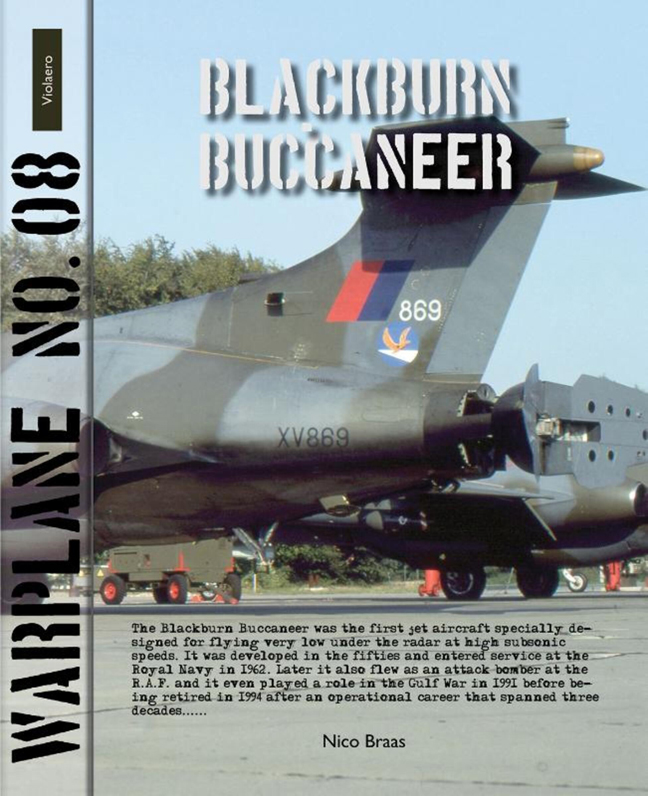Book contents
- Frontmatter
- Introduction
- In service at the royal navy
- Buccaneer Photo-Recce crate
- South African nuclear bombers
- In service at the R.A.F. … at last
- Martel Missile (AJ.168) (AS.37)
- WE177 nuclear bomb
- The Buccaneer goes to war
- Museum piece
- Final phase out and retirement
- Sub-versions S.2:
- Accidents and Incidents
- Survivors
- Technical Description
- References
- Credits
- Frontmatter
- Introduction
- In service at the royal navy
- Buccaneer Photo-Recce crate
- South African nuclear bombers
- In service at the R.A.F. … at last
- Martel Missile (AJ.168) (AS.37)
- WE177 nuclear bomb
- The Buccaneer goes to war
- Museum piece
- Final phase out and retirement
- Sub-versions S.2:
- Accidents and Incidents
- Survivors
- Technical Description
- References
- Credits
Summary
The Blackburn Buccaneer was the first jet aircraft specially designed for flying very low under the radar at high subsonic speeds. It was developed in the fifties and entered service at the Royal Navy in 1962. Later it also flew as an attack bomber at the R.A.F. and it even played a role in the Gulf War in 1991 before being retired in 1994 after an operational career that spanned three decades…
Early development and test flying
The need for a special shipboard attack plane as a counter-threat against Soviet warships in the North Sea area became apparent at the early fifties. The idea was to develop an aircraft that could fly during an attack undetected below the ship’s radar. The new airplane plane was planned to be jet-powered and fully navalized for operation from aircraft carriers. In 1954 the British Admiralty released specification M.148T for such a type, better known as ‘NA.39’. A dozen companies drew up designs, but finally Blackburn received in 1955 the acceptance of their submitted project. Main person responsible for this project was chief designer B.P. Laight. For Blackburn it was a quite challenging project since this company had at that time hardly any experience with jet-propelled aircraft.
The new attack plane was so urgently needed by the Royal Navy that Blackburn received an order for not less than twenty pre-production aircraft, the first one scheduled for its first flight in April 1958. For continuous low-flying the airframe had to be carefully designed to give optimal airflow at the lowest possible drag. As a result the shape of the fuselage was largely dictated by the new ‘Area-Ruling’ principles as discovered by U.S. NACA aerodynamicist Richard T. Withcomb. In fact, early designs had to be drastically changed to incorporate these new aerodynamic principles. The Whitcomb rules resulted in a very pronounced bulge in the rear fuselage of the NA.39. The final NA.39 design B.103 showed a twin-engine aircraft with the both engines placed in parallel in the centre fuselage section. Each engine had its separate air intake and exhaust. Further the new ‘low-flyer’ had broad-chord swept wings and a T-tail.
The extreme end of the fuselage was used for a split air brake. A quite hidden feature of the NA.39 was its system of boundary layer control to lower the landing speed. The NA.39 had a large rotating bomb-bay below the fuselage that was hydraulically operated.
- Type
- Chapter
- Information
- Blackburn Buccaneer , pp. 4 - 7Publisher: Amsterdam University PressPrint publication year: 2014



